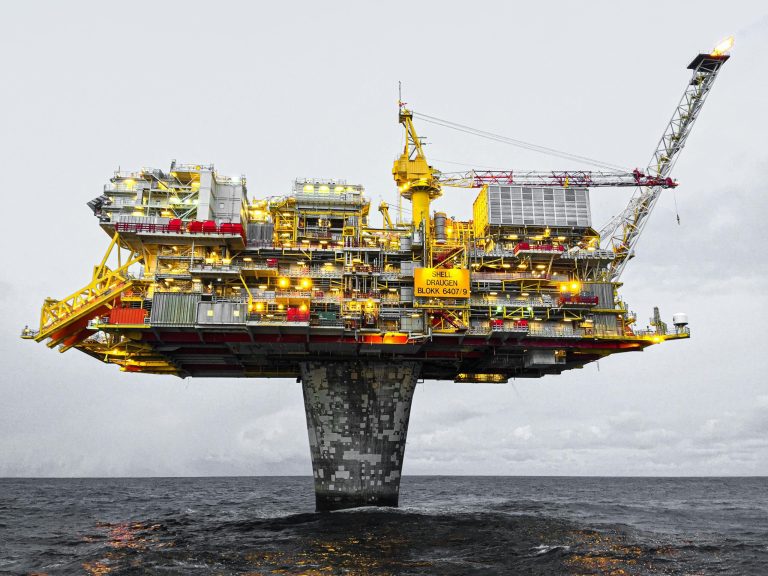Oil prices retreated on Thursday as trade tensions between the US and China escalated.
This comes even as Trump reciprocal tariffs on most trading partners for 90-days.
However, the sentiments in the oil market soured after Trump raised tariffs on China to 125% from the previously announced 104%.
At the time of writing, the price of West Texas Intermediate crude oil was at $61.68 per barrel, down 1.1%, while Brent crude on the Intercontinental Exchange was down 1.2% at $64.72 a barrel.
On Wednesday, WTI prices rose above $60 per barrel in a rally after Trump announced the pause in reciprocal tariffs. Earlier in the trading session, both WTI and Brent had slumped to their lowest levels since February 2021.
Analysts at ING Group, said in a note:
While the pause offers some relief to markets, there’s still plenty of uncertainty on the trade front.
China demand
“This uncertainty is still likely to drag on global growth, which is clearly a concern for oil demand,” ING analysts said.
Concerns about falling demand for crude oil in China have plagued the market over the last year.
China is the biggest importer of oil in the world, and shipments of crude have remained low compared with the previous year.
The extremely high tariffs are expected to further reduce oil demand in the Asian giant.
“The slide comes amid clear evidence of weakening consumption in China and rising fears that the Trump administration’s tariffs will exacerbate a slowdown in economic growth, not just in China, but around the world,” said David Morrison, senior market analyst at Trade Nation.
Morrison added:
Neither side is about to cede ground, particularly this early in the game. So, investors must prepare for more uncertainty and market volatility to come.
Meanwhile, an 84% tariff on US goods was also announced by China, with an additional import levy taking effect on Thursday.
Better supplied market
Analysts expect oil prices to remain in the red after the initial optimism over Trump pausing the reciprocal tariffs on most countries for 90-day fizzles out.
Last week, the Organization of the Petroleum Exporting Countries and allies announced a daily output increase of 411,000 barrels per day, adding to concerns about falling demand.
The group is scheduled to raise output by 135,000 per barrel per day in April, which is the first step in unwinding the longstanding OPEC+ voluntary production cuts. The market had expected OPEC to raise output in May by a similar amount.
The oversupply in the market is expected to be around 600,000 barrels per day in 2025, according to the International Energy Agency. With the ongoing trade escalations, the oversupply is likely to increase even further, experts said.
“The ICE Brent forward curve is signalling a better-supplied oil market, at least across parts of the forward curve,” ING analysts said.
While the front end of the curve is in backwardation, it has shifted into contango from the January 2026 contract onwards.
The Brent Dec-25-26 spread’s shift into contango, combined with other market indicators, suggests that the market balance will soften in the future, according to ING.
“On the plus side, President Trump always said he wanted to drive energy prices down, and he’s done it,” Morrison added.
Keystone Pipeline
ANZ Research analysts said on Thursday that prices were somewhat supported by the Keystone Pipeline’s declaration of force majeure on scheduled oil shipments.
However, they also noted downside risks due to signs of surging supply from OPEC members.
Following an oil spill close to Fort Ransom, North Dakota, the Keystone oil pipeline, operated by TC Energy (formerly TransCanada), which runs from Canada to the US, remained closed on Wednesday.
The company is currently evaluating plans for its return to service.
The Caspian Pipeline Consortium announced on Wednesday that it had resumed loading oil at one of the two Black Sea moorings that had been previously shut down.
This action was possible after a court lifted restrictions that had been placed on the Western-backed group’s facility by a Russian regulator.
Meanwhile, the Energy Information Administration reported that US crude inventories increased by 2.6 million barrels during the week ending April 4.
This increase was almost double the 1.4 million barrel rise that was expected in a Reuters poll.
The post Oil market sheds tariff pause optimism as weak demand and oversupply drag prices appeared first on Invezz

